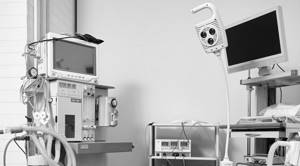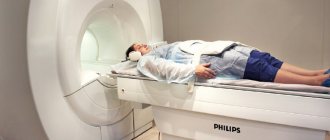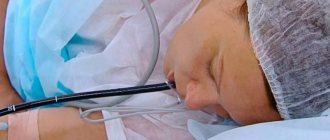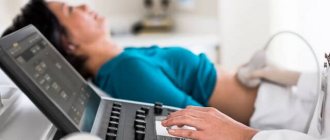Preparation for FGDS
Fibrogastroduodenoscopy is a method of examining the mucous membrane of the stomach and duodenum. With its help, erosions, ulcers of the mucous membrane, tumor processes and other pathological foci are identified.
The examination is carried out using an endoscope. The equipment is a flexible probe containing a fiber optic network inside. At the end of the probe there is a tiny video camera that transmits the captured information to the monitor screen in high resolution. This allows you to view the mucosa step by step without missing a single centimeter.
Good preparation allows for the best visibility and patency of the digestive tract for a thorough diagnosis.
Before FGDS
- Medical instruction . The attending physician will tell you what the procedure is, how long it will take, and what should be the preparation for fibrogastroduodenoscopy.
- Diet . The last meal before the procedure should be 8-12 hours before. It is necessary to eat easily digestible food. This means that you cannot eat nuts, meat products, mushrooms, chocolate, fatty foods, and spicy foods. You can have chicken and fish (boiled or steamed), buckwheat porridge and vegetables.
- Water . Before FGDS, you should not drink 2-4 hours before the procedure.
- Bad habits . Alcohol is not allowed 2-3 days before the procedure due to its local irritant effect. It is not advisable to smoke on the day of the procedure.
- Taking medications . 2 hours before the procedure, taking pills and other medications is not allowed. If there are vital medications that cannot be stopped, you must notify your doctor.
- Organizational aspects . You need to take your passport and directions with you.
On the day of the procedure
Preparation for EGD of the stomach on the day of the procedure involves quitting smoking. You should also not brush your teeth, chew gum, or eat candy. This can cause mucus to form in the stomach.
The doctor must be warned about possible poor health and the presence of allergic reactions in the past.
How to prepare for gastroscopy. 10 steps
1. Find out why the research is being done
It is important for the patient to clearly understand why the study was prescribed to him and what exactly the doctor intends to find out from its results. Whether we want to determine the cause of pain that has not been eliminated by previous treatment, whether we want to assess the risks of gastrointestinal bleeding in a patient who is scheduled for surgery, or whether we are regularly checking for precancerous changes in the stomach - a lot depends on the purpose of the study. Among other things, the purpose of the test determines how to prepare for it, whether a biopsy will be taken during the test, and how deep to look with an endoscope.
2. Tell your doctor about your medications and health problems.
Preparation for the study may depend on the patient’s health characteristics. First of all, doctors will be interested in heart diseases and heart valve prostheses. If a patient has a heart defect and is taking an anticoagulant drug that interferes with blood clotting, they will likely need special preparation. You will have to stop the medications for a while, before the study you will need to perform a control test for the INR level, and two hours before the endoscopy you will need to administer a prophylactic antibiotic. A patient who has suffered a myocardial infarction will most likely need a follow-up cardiogram.
It is worth keeping in mind one more important nuance when searching for Helicobacter pylori infection in the stomach - a common cause of chronic gastritis, peptic ulcers and the most significant risk factor for the development of stomach cancer. To search for Helicobacter during gastroscopy, material is taken for examination. And if the patient continues to take anti-ulcer drugs or antibiotics for some other disease before the study, the result of his test will be negative, even if in fact Helicobacter is present.
And finally, if it is planned to take material from the patient for culture from the duodenum, it is important to warn about the antibacterial drugs being taken - they may affect the result of the study. Practice shows that, unfortunately, these points are rarely taken into account by the doctor, and even more so by the patient.
Photo: Maria Mozharova
3. Don’t stop eating bread if you suspect you have gluten intolerance.
The fashionable diagnosis of celiac disease (gluten intolerance) today is expressed in the fact that the mucous membrane reacts incorrectly to contact with gluten, a protein found in cereals. With celiac disease, inflammation of the small intestinal mucosa develops, villi atrophy, intestinal absorption is impaired, body weight decreases, and various unpleasant conditions occur. Unfortunately, this disease is often misdiagnosed in our country.
There is a regulated way to diagnose celiac disease. It starts with a blood test for specific antibodies. If they are elevated, we must confirm the diagnosis with a biopsy, which is done during a gastroscopy. A biopsy is taken from the duodenum, with at least four pieces. There is a fundamentally important point: both studies - a blood test and a biopsy - must be carried out against the background of gluten consumption. Before performing both studies, the patient must eat at least three grams of gluten daily for at least two weeks, that is, 300 grams of bread.
In reality, what usually happens is this: a patient comes to the doctor and complains of bloating and diarrhea. The doctor says: “There are several diseases that can give similar symptoms. One option is celiac disease. We'll figure out". The patient decides to take the initiative and excludes bread from the diet since he may have celiac disease. Against this background, he donates blood, the antibodies come back negative, and the doctor in vain removes the diagnosis of celiac disease from the agenda. Only after gastroscopy reveals histological changes characteristic of celiac disease can we tell the patient that from now on he needs to eliminate gluten from his diet for life, not earlier.
4. Think about the anesthesia method in advance
Before inserting the endoscope, patients are irrigated with an anesthetic, most often lidocaine. If you are allergic to it, it is important to warn your doctor about it. In most cases, local anesthesia is sufficient. But there are patients who have an extremely pronounced gag reflex or are very anxious, or there are some structural features of the neck and the person really needs general anesthesia.
This is rather an undesirable option, because you cannot ask an unconscious patient to make swallowing movements while passing the endoscope from the pharynx into the esophagus - this increases the risk of esophageal perforation. But if you still plan to have general anesthesia, it is worth keeping in mind that this may require additional measures: a meeting between the patient and an anesthesiologist, a cardiogram and a blood test. The patient should keep in mind that after general anesthesia, he should not drive a car or other transport during the day. That is, you do not need to come to the study while driving. It is also worth finding out in advance whether general anesthesia is performed in the clinic by an anesthesiologist or by the endoscopist himself. Indeed, during general anesthesia, the pulse, capillary blood oxygen saturation, respiratory rate and blood pressure must be checked every 5 minutes. If the endoscopist is constantly distracted from the endoscope, can you imagine how long the examination will take and what quality it will be?
5. Find out about the clinic equipment
Previously, when endoscopy first appeared, fiber-optic endoscopes were used, which were thicker in diameter. Nowadays, most endoscopes have already been replaced by video endoscopes, which have a significantly thinner diameter. But in some places there are still old devices. In addition, there are endoscopes for transnasal insertion, which are more often used in pediatrics - they are easier to tolerate, but are not as good for collecting material. There is magnification endoscopy, during which you can magnify the image as if under a microscope. There is HD, an examination in the narrow spectral range of NBI light, which allows you to better identify areas of change in the esophageal mucosa on the way to cancer. And finally, there is chromoendoscopy with staining to detect pathological surface changes in the mucosa. The patient should find out which endoscope will be used for the examination, and whether the clinic has all the appropriate equipment for the type of gastroscopy that he or she needs.

Photo: Maria Mozharova
6. Come strictly on an empty stomach
In order for the study to be informative, comfortable and take the minimum necessary time, the patient must come on an empty stomach. You should not eat or drink for six hours before the test. Often a person thinks: “I was told to eat on an empty stomach, but if I eat a pie, it’s not scary. Or I’ll drink a glass of coffee - that’s not food.” As a result, in this cloudy liquid in the stomach, the endoscopist cannot discern the condition of the mucous membrane. He devotes the first minutes to removing the contents of the stomach through an endoscope, cleaning and rinsing. Or he simply says: “Come tomorrow.”
If the doctor suspects that the patient has impaired gastric emptying, duodenal stenosis, or a tumor, he may need more time without food and water before the test. Therefore, the doctor who orders the test should think carefully about how many hours the patient needs to fast in a particular situation. It is extremely important for the patient to follow this recommendation.
7. Don't talk, discuss the stop sign.
Finally, we come to the procedure itself. The patient is warned how exactly the procedure will be carried out, knows about its goals, told about all the medications he is taking, it is not a revelation to him that he will be given a prophylactic antibiotic for a heart valve prosthesis, he has agreed on the method of anesthesia in advance. And so the procedure begins. An endoscope is inserted into the patient and then he begins to behave restlessly, try to talk, pull out the endoscope - and the whole study goes down the drain.
During the examination, when the endoscope has already been inserted, under no circumstances should you try to talk to the doctor, and even more so you should not pull out the endoscope - this is fraught with injury and rupture of organs, pinching of the endoscope and other serious troubles. To prevent such a situation, the patient and the doctor must clearly define the conditioned stop signal. For example, if for some reason, after the endoscope has already been inserted into the patient, he suddenly becomes ill - he begins to lose consciousness, panic, or experience sharp pain somewhere - he does not try to speak or pull out the tube, but taps the doctor’s leg twice either an assistant, or on your own leg.
8. Know about possible complications
After the examination, unpleasant sensations in the throat and neck are possible for several hours, sometimes days. This is fine. But there are a number of effects that are not normal and require urgent medical attention. For example, if you experience hemoptysis, vomit the color of coffee grounds, or sharp pain in the neck or chest, swelling of the neck, difficulty breathing, or crunching when you rub your chest. In such situations, you don’t need to think: “I’ll wait a day or two, it will resolve itself.” Maybe it will resolve, or maybe mediastinitis will develop, from which they die. We need to call an ambulance. It is better to make a mistake with an assumption than to miss dangerous complications.
9. Do not do a test study earlier than expected.
There is a widespread myth on various Internet forums that it is pointless to treat Helicobacter - you won’t be cured anyway or you will be re-infected in another month. However, in 2021, an excellent American study was conducted that assessed the risk of re-identification of Helicobacter in patients who had previously been treated for it. The result showed that in communities where the level of sanitation and hygiene is sufficiently high, the risk of re-identification of Helicobacter is no higher than 1% per year. And in most cases, the bacteria that does appear again is the same strain. That is, we are not talking about re-infection, but the reactivation of an untreated infection.

Photo: Maria Mozharova
Where do these myths come from? It's all about how the effectiveness of treatment in patients is assessed. All international recommendations for the diagnosis and treatment of Helicobacter clearly state that the effectiveness of treatment should be assessed no earlier than four weeks after completion of the course of treatment. Before testing, the patient should not take proton pump inhibitors for two weeks, and antibiotics, metronidazole, and bismuth preparations (De-Nol) for four weeks. But what happens in reality? The patient complains of pain in the upper abdomen. He undergoes a gastroscopy, which reveals an ulcer in the duodenum and Helicobacter. The doctor prescribes medications and writes: control the healing of the ulcer in four weeks. The patient takes the medications for two weeks and after another two weeks comes for a control gastroscopy. That is, after completing the course of drugs, only 2 weeks pass, the Helicobacter test turns out to be negative. Nobody takes into account the fact that the deadlines were not met. As a result, after six months, the undead Helicobacter restores its population, and gastritis returns.
10. Don't do a gastroscopy if it's not necessary.
To check the effectiveness of treatment for Helicobacter, we like to test the blood for antibodies to Helicobacter, although this test is only suitable for primary diagnosis. They also like to prescribe a control gastroscopy . In fact, in most cases there is no need for a control gastroscopy. The recommendations of the Maastricht Consensus (the main document that publishes updated data on the treatment of Helicobacter pylori infection) say that the preferred methods for assessing the effectiveness of a course of treatment for Helicobacter pylori are the C13 urease breath test or stool examination. The exception is the case when, in parallel with gastritis, we must monitor some precancerous changes or there are independent indications for performing an endoscopy, for example, before a planned operation. At the same time, a quick urease test, which is carried out immediately in the endoscopy room, is no longer recommended. When performing a biopsy, to check the effectiveness of treatment, it is necessary to conduct a histological examination, and always from the antrum and body of the stomach.
Another common example of an unnecessary examination is that if you have pain in the upper abdomen, clinics like to immediately send you for a gastroscopy. But foreign recommendations say that for this symptom, gastroscopy should be done only for patients whose symptoms have not gone away within two weeks of treatment. Or patients whose symptoms first appeared over the age of 45 and are accompanied by “alarming” signs that may indicate gastric cancer - unmotivated sharp loss of body weight and gastrointestinal bleeding.
And finally, another example of a suboptimal purpose for gastroscopy is reflux disease. This is a problem that occurs due to the reflux of gastric contents into the esophagus and overlying sections. The main symptoms are heartburn and regurgitation, that is, the flow of liquid with a sour, bitter taste from the stomach into the mouth, as well as cough and sore throat. Doctors like to diagnose reflux disease using gastroscopy. In fact, the test may reveal changes in the lining of the esophagus - but cannot confirm that these changes are the cause of the symptom. To confirm the presence of gastroesophageal reflux and its role in the development of cough and sore throat, it is more correct to do another study - pH impedance measurement of the esophagus.
Asya Chachko
After FGDS
We hope you now know what is needed for FGDS and how to prepare for the procedure. Let's talk about how to behave after the examination:
- You can’t fast (not eat for more than a day);
- bad habits need to be put aside for a while;
- you should avoid stress and physical activity;
- You can drink water and any drinks except alcoholic drinks immediately;
- You can eat food after 30 minutes. – 1 hour after the procedure;
- You need to monitor your condition and if you experience pain, hemoptysis or other changes in your condition, consult a doctor.
Features of diet and food intake
The food after the procedure should be light in the first days - steamed, boiled. Oatmeal, yogurt, and steamed meat will do. You need to drink at least 1.5 liters of water.
Portions should be moderate, meals should be divided (5-7 meals) so as not to overload the stomach. You definitely need to eat heated (not hot!) food.
Not allowed : fatty, fried, spicy, sour, fast food, baked goods, sauces, coffee, soda. It is advisable to follow such a diet for 2-4 weeks, especially if a biopsy was performed or signs of an inflammatory process were detected.
If the examination is scheduled for the afternoon (after 13:00), then in the morning on the day of the examination (about 6:00) a light breakfast is allowed:
- yogurt or a piece of bread;
- drinks (tea, water, including mineral water) can be consumed in a volume of up to 100 ml no later than 3 hours before the procedure.
What can you eat?
The day before the examination, you should follow a dietary regime. It may include the following products:
- mashed potatoes;
- buckwheat;
- oatmeal;
- cheese;
- boiled chicken;
- various soups;
- juices – fruit and vegetable.
What can't you eat?
The day before the procedure (in particular, in the evening), you should avoid fatty foods. These include:
- meat;
- mayonnaise;
- cheese;
- fatty fish.
Smoking is prohibited on the day of the planned gastroscopy!
What to do with the medications you take?
In case of long-term treatment, medications can be taken early in the morning before the procedure and washed down with a small amount of water. If you are unsure about taking medications correctly, consult your doctor.
Patients with diabetes should tell their doctor about their condition. They will have a gastroscopy in the morning on an empty stomach. Medicines for the treatment of diabetes can be taken half an hour after the examination, when you are allowed to eat. You can take food with you.
If the patient receives a sedative injection, he must be under medical supervision for 2 hours. It is extremely undesirable for him to remain unattended for 24 hours; riding a bicycle, driving a car, or performing other activities that require increased attention are prohibited. Due to these factors, the patient must be provided with transportation home.
Patients taking medications that affect blood clotting, such as Warfarin (Lavarin), Clopidogrel (Plavix, Trombex), Prasugrel (Efient) and other anticoagulants should inform your doctor about this. In the case of a planned gastroscopy procedure, it will be necessary to stop taking Warfarin at least a week before the scheduled date and, if necessary, replace it with low molecular weight heparin. You should consult your doctor about this. In addition, the day before the examination, blood samples should be taken to assess blood clotting.
How to improve your preparation?
To improve examination of the mucous membrane, foaming should be minimized. To do this, 60 minutes before the test, you need to drink 5 ml of semiticone emulsion in a small amount of liquid (no more than 50 ml).
What to do before a colonoscopy?
It is necessary to cleanse the intestines. This is achieved through diet and cleansing preparation. Previously, they did an enema, but now they have moved away from this practice. Medicinal bowel cleansing is carried out.
This method is more convenient, since 3-4 enemas are required to completely cleanse the intestines, and this contributes to dysbacteriosis and is a source of significant discomfort. Instead, one of the medications prescribed by the doctor is taken according to the regimen.
Diet before colonoscopy
Two days before the procedure, if there is no constipation, the patient switches to a slag-free diet:
- Not allowed - black bread, vegetables, fruits, legumes, greens, cottage cheese.
- You can - eggs, semolina, broth, boiled (meat, sausage, fish), kefir, cheese.
On the day of the procedure - only liquid food (broth). Drinks include water and tea. You can take medications, with the exception of iron-containing drugs, antiplatelet agents (aspirin), anticoagulants (warfarin) and sorbents (activated carbon).
After colonoscopy
If the procedure is performed under anesthesia, the patient must be picked up from the clinic after a couple of hours by an accompanying person. If this is not possible, you should not go home on your own. It is better to use a taxi.
After the procedure you should avoid:
- heavy foods, coffee, alcohol;
- transport management;
- dangerous sports;
- significant physical activity;
- work that requires increased attention.
You can eat and drink only 40-60 minutes after the examination.
Diet - gentle, fractional, fortified:
- Smoked meats, canned food, sweets, chocolate, and bread other than bran are not allowed
- You can eat low-fat fish, cottage cheese, yogurt, kefir, milk, steamed vegetables and fruits.
For the fastest rehabilitation at home, you need to follow a gentle regimen and monitor your condition (if you have a fever and pain, consult a doctor). In some cases, herbal medicine and medications are prescribed. Do not take aspirin or warfarin (they interfere with blood clotting). You must follow medical recommendations.
Diet before gastroscopy
A special strict diet is not required before gastroscopy (gastric endoscopy). Gastroscopy is performed on an empty stomach so that the examined organs are in a calm state. But in order for the results to be as reliable as possible, you need to remember some important points before preparing for this study. In this article we will focus on proper nutrition before gastroscopy, since nutrition is one of the important conditions for preparing for the study.
What should you not eat before gastroscopy (endoscopy) of the stomach?
First of all, three days before gastroscopy you need to give up alcohol, fatty foods, spicy foods and smoked meats. That is, it is necessary to avoid those foods that can cause flatulence in the intestines and change the acidity of the stomach, irritating the mucous membrane. What foods are difficult for the body to digest and doctors recommend abstaining from them before the examination?
Before gastroscopy, 48 hours before you need to exclude:
- fatty fish and meat;
- fast food;
- pickled and salted foods;
- mushrooms in any form;
- all kinds of sauces and seasonings - ketchup, mustard, mayonnaise, horseradish, adjika, etc.
- smoked meats, canned food;
- nuts, seeds.
You should not eat 24 hours before gastroscopy:
- whole grains;
- legumes;
- milk, fat cottage cheese;
- cold and hot food;
- flour products;
- pasta;
- tomatoes;
- quince, oranges, tangerines.
On the day when gastroscopy is performed, you cannot eat, since the study is carried out on an empty stomach!
Is it possible to drink water, tea, coffee before gastroscopy?
Doctors prohibit drinking coffee, tea and any drinks before gastroscopy. Anyone who would definitely like to drink something should use only clean water without gas, but no less than 3 hours before the test and in a volume not exceeding 100 ml. Alcohol of any strength (even low-alcohol beer) is strictly prohibited.
How many hours before gastroscopy can you eat?
The gastroscope is inserted into the pharynx, then into the stomach, so the upper part of the digestive tract, the entire area being viewed, must be free of food. This means that you should not eat food at least eight hours before the examination. If the manipulation takes place in the morning, then you should have dinner before 18:00, choosing light foods that are quickly digested. If gastroscopy is planned after lunch, then doctors allow you to have a light snack in the morning. Before the study, 8-10 hours should pass after eating. What can you eat before gastroscopy of the stomach?
The day before dinner (until 18 o'clock) you can eat the following foods: mashed potatoes, rolled or buckwheat porridge, vegetarian potato soup (without fried ingredients), steamed white poultry cutlets, dried white bread, soft-boiled eggs, boiled low-fat fish, baked vegetables and fruits.
Food should be warm, soft (puree-like) consistency, and portions should be small.
Approximate diet before gastroscopy (endoscopy of the stomach) the day before the study.
Memo - what you can eat on the eve of gastroscopy
1. Soups.
For first courses, it is advisable to give preference to vegetarian soups without additional fat. The soup can be sprinkled with finely chopped herbs. It is advisable not to eat borscht.
2. Second courses.
Meat is excluded, but boiled fish, steamed cutlets from lean fish (pike perch, cod, pollock, hake, ice fish, perch, pike) or white poultry meat are acceptable. The side dish can be mashed potatoes, omelette, buckwheat porridge.
3. Vegetables and fruits the day before gastroscopy.
Vegetables and fruits can be consumed, but they must be either boiled or baked. Vegetables include potatoes, beets, pumpkin, cauliflower, carrots, and fruits - apples. You can eat a banana.
4. Milk and milk products on the eve of the study.
It is not recommended to consume whole milk the day before the examination, but fermented milk products (acidophilus, kefir, yogurt), as well as low-fat cottage cheese and curd dishes can be consumed. You can add a tablespoon of low-fat sour cream to the finished dish. It is possible to use milk soup (diluted in half with water) with boiled cereals or small noodles.
5. Drinks.
The day before gastroscopy, you can drink still table mineral water, fruit compotes, decoctions, weak tea, and rosehip decoction. Drinks must be warm.
You can eat up to 19 hours before the test. If gastroscopy is scheduled after lunch, you can allow a light snack in the morning 8 (for children) - 12 hours (for adults). You can drink water no later than 3 hours before the test (no more than 100 g).
You cannot ignore the recommendations for organizing proper nutrition and a specific diet. Any error in the diet can cause an incorrect diagnosis during gastroscopy (stomach endoscopy).
Preparing for an X-ray of the intestines
X-ray of the intestine allows you to obtain comprehensive information about the condition and patency of the large, small intestine and appendix. An examination is prescribed if tumors, polyps or other gastrointestinal problems are suspected.
Modern intestinal X-ray is a safe, non-invasive procedure. During this procedure, the patient may be given an enema with a radiopaque substance (usually barium). The drug is harmless, cases of allergies are extremely rare. The radiation intensity is selected individually, depending on the age and health status of the patient.
Before the procedure, you must follow the recommendations as for a colonoscopy.:
- provide plenty of fluids and a slag-free diet;
- take medication prescribed by your doctor to cleanse the intestines before the x-ray;
- or perform several cleansing enemas.
On the day of the procedure:
- metal jewelry and things (dentures, body crosses) are removed;
- if you have implants or are allergic to anything, you need to tell your doctor about it.
After the procedure, no particular discomfort is observed. So no pain relief or rehabilitation is required. An enema may be necessary as barium causes constipation.
Results and reviews
Dietary nutrition before gastroscopy for 3-4 days provides reliable information about the condition of the organs of the upper gastrointestinal tract.
- “... I went to the hospital about severe stomach pain that goes away after eating even a small amount of food. They gave me a referral to FGDS. The doctor gave the patient a reminder about preparing for gastroscopy, including dietary restrictions. I followed everything quite strictly, changed my usual diet and diet. I excluded all products that could affect the quality of the examination. The procedure was successful and, to my surprise, relatively painless, which is what I was so afraid of. The diagnosis is gastric ulcer.”






